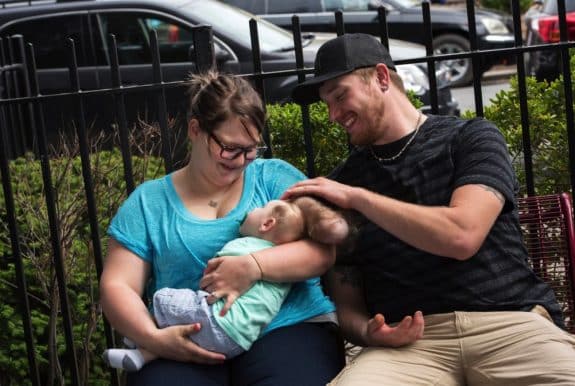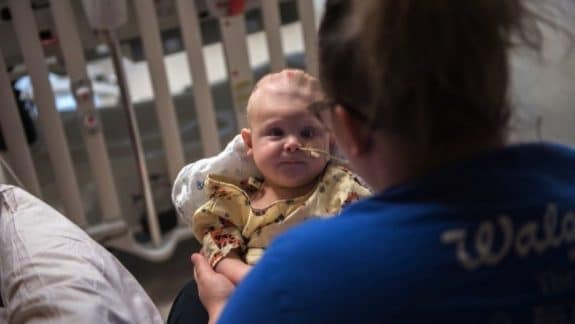There are some things that happen in this world that can only be attributed to being a “miracle.” Such is the case of Sierra Yoder and her husband Dustin, when twenty-two weeks into her pregnancy, the couple learned that the baby Sierra was carrying had a very rare birth defect. During Sierra’s second term ultrasound, the tech noticed something was a miss. Two days later doctors revealed that their baby had a rare, and often fatal birth defect called an encephalocele, in which the skull doesn’t form properly. The couple was told the child was “incompatible with life,” and was given 24 hours to decide whether or not they wanted to terminate the pregnancy.
However, the Yoders were not ready to give up on their child, and wanted to give it every single chance of survival it possibly could have, so they opted to continue with the pregnancy. That evening, after making such a rough decision, Sierra says she felt her baby kick, and that is when she knew that she and her husband had made the correct decision. Sierra recalled, “When we first heard the word encephalocele, we had no idea what it was. We just knew that it involved something with his head. From what they were telling us, there was no possible way that he was ever going to survive.”
A bouncing baby boy, named Bentley, entered this world on November 1, 2015. Most of Bentley’s brain was formed outside of his skill, which had a hole at the top. In the beginning, odds were looking grim for the child, and his parents were told they may only get an hour with him. His parents only bought him one outfit. The hospital staff even arranged hospice care. But, as each hour turned into days the newborn survived and thrived. Despite this, Sierra and Dustin knew that Bentley needed more. The encephalocele was covered only by skin and a thin membrane, and could easily get bumped or become infected. The weight of it was too much for the tiny baby, and it was steadily growing, filling with fluid.
When doctors at the Cleveland Clinic expressed concern about operating on the little boy, Dr. John Meara, a surgeon at Boston Children’s Hospital came through with a plan.
Dr. Meara, along with Dr. Mark Procter, proposed to drain the fluid, expand Bentley’s skull, and gently put the brain back in. This was encouraging to the Yoders.
“That was like a breath of fresh air, that they weren’t thinking, “this kid isn’t going to make it,’” says Sierra. “They were actually saying, ‘this kid has a chance.’”
“We’ve operated on a lot of encephaloceles in the past, but we’d never had one where there was so much brain tissue we felt was functional and had to be protected, put back in the cranium and covered up,” Dr. Proctor told Thriving, the Children’s hospital’s blog. “It really presented a unique challenge.”
To practice, the pair used a 3D printer to map out Betnley’s skull. In May, Meara and Proctor performed the surgery on the child’s skull during a 5 hour surgery. Initially he did well, but needed a shunt to be inserted when a build up of fluid was found in his brain 2 days later.
The long-term impact the condition will have on the little boy is currently unknown. However, he is doing well and living at home with his parents and older brother, Beau. Dustin says, “All I have to do is look at him to keep going when the motivation isn’t really there.”








